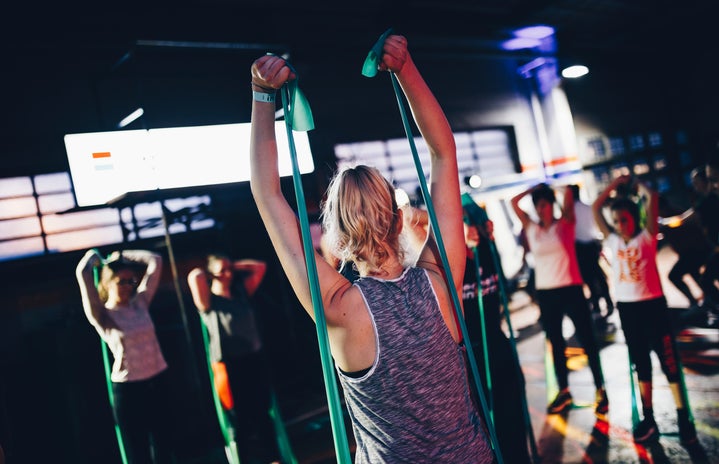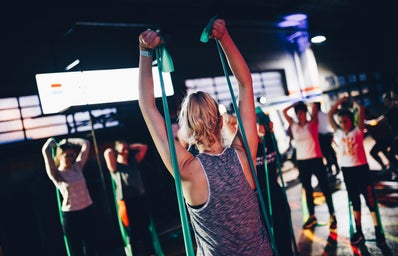Sex education and health class may be a far cry from the iconic scene in Mean Girls, but that doesn’t mean that it’s perfect. It’s known for leaving out important topics—especially those relating to LGBTQ+ people. These are seven essential things we wish they had covered in sex ed.
1. The coming out process
Coming out is a huge part of any queer person’s life, and health or sex education would have been the perfect class to cover this subject.
Sarah Jo Enloe, a senior at Westfield State University, feels that a lack of comprehensive LGBTQ+-inclusive sex education is part of the reason she didn’t come out as bisexual until recently. “It would have been nice if they’d talked more about resources for those in the process of coming out and maybe reached out to those who were still struggling with their feelings,” Sarah Jo says.
Many people are as young as elementary or middle school when they’re introduced to sex ed. That makes it a great time to teach kids that they should feel comfortable about their identity, and provide them with additional resources for the coming out process. Coming out is a destabilizing process for many people, and having resources can help them feel more supported.
Related: Safe Sex for Queer Girls: What You Didn’t Learn in Health Class
2. Safe sex for same-sex couples
A cornerstone of most sex education is the emphasis on safe sex for couples who choose to have sex, but these conversations often don’t include same-sex couples.
“I didn’t even know there was a female condom,” says Macey Lavoie, a recent graduate of Westfield State University. “Everyone should understand safe sex,” Macey says. “It’s an important topic, especially because the concept of hooking up is so common.” Plus, female condoms can be used by opposite-sex couples as well.
If safe sex is covered, it should include everyone. It should introduce female condoms, dental dams, and all forms of birth control and STI prevention besides the male condom or the pill. Many people don’t know that same-sex couples are at risk for many STIs, too—and that’s not a risk worth taking.
3. Gender identities
When gender identity isn’t covered in health or sex ed, it leaves people confused about transgender topics, including a wide range of identities beyond the binary, such as genderqueer and gender fluid. Those who identify as somewhere on the transgender spectrum may feel they have nowhere safe to turn for information.
There are a wide range of subjects under this umbrella that need to be covered—what gender identity is, figuring out your own gender, using restrooms, how to deal with bullying, the basics of transitioning (or not), and what it means to be agender. Sex education on transgender issues can help trans people learn about themselves, and it can also teach cisgender students to be more inclusive.
4. Same-sex partner violence
Partner violence is usually a part of sex education and health, but most people aren’t aware that it can happen to same-sex couples, too.
“Specifically talking about LGBTQ relationships is really important because I think that’s never a part of the conversation,” says Kristin Russo, the co-founder of Everyone Is Gay and The Parents Project. She goes on to explain that because most conversations about partner violence don’t include same-sex relationships, teens and young adults might not be aware that it’s a possibility.
According to the National Violence Against Women survey, 21.5 percent of men and 35.4 percent of women living with a same-sex partner have experienced partner violence, which is a shocking number.
Christina Spaccavento, a sex therapist, relationship specialist and counselor, agrees with Russo. “Young LGBTQ people may find it more difficult to access help because of a limited understanding of the problem of LGBTQ intimate partner violence, stigma and inequalities in the health and social system,” she says.
If people are unaware that same-sex partner violence occurs, or that men can be the victims of abuse, they aren’t likely to recognize it when it’s happening to them, or to a friend. That can prevent them from speaking out and getting help as early as possible. If you or someone you know is experiencing partner violence, there are resources that can help, including the National Domestic Violence Hotline.
5. Same-sex family planning
Although it may be years away for most people taking sex ed, family planning for same-sex couples is rarely discussed. Most of the emphasis is on avoiding accidental pregnancies for straight couples.
“I want young men and women to know that there is an option out there for them no matter what gender or sexual orientation they are,” says Emma Shaw, a senior at Bridgewater State University. “I think it’s important to know that there are options out there for everyone.”
Straight couples are often introduced to the idea of family planning in health class, with topics such as how to decide when a pregnancy is right, infertility issues, ovulation cycles, and preparing for a child. The same subject should be extended to same-sex couples.
6. The definition of consent
Consent is sorely missing from a lot of sex education, not just for LGBTQ+ people. We’re often taught about sexual assault and rape, but mainly in terms of how to prevent it, not the basics of what it means to consent.
“I really don’t think the current sex ed curriculum addresses sexual assault and rape much at all,” says Desiree Costa, a first year student at the University of Massachusetts Law School. “When you teach young teenagers what consent is, and that it is important, they will carry that with them as adults.”
When consent is discussed, it should be made clear that the issue applies to LGBTQ+ people, too. Same-sex partners run into the problem of consent during hookups, too, and need to be aware that only an enthusiastic “yes” means yes, and “no” always means no. Many people are misinformed and think that if a person’s actions suggest they want sex, they don’t need to confirm it verbally with the person. Sometimes, sexual partners also feel pressured to “go through with it,” if they feel they’ve been giving off these kinds of signals. People are often unaware that partners also can’t consent to sex if they are impaired by alcohol or drugs.
7. The asexuality spectrum
While many sex ed courses cover the topic of abstinence, not many talk about asexuality. It’s assumed that teens and young adults want to have sex, and that if they don’t, it’s because they’re purposely refraining.
This leaves asexual students struggling to figure out where they fit in. It doesn’t give people the option to realize that they may be asexual, and how to navigate that part of their life.
Russo suggests that sex education and health should cover consent, and that the subject of consent can bring up the broader topic that some people aren’t interested in sex. “It also opens up a conversation that can say some people may want to have sex, and some may not want to have sex,” she says.
Since asexuality isn’t often discussed in schools or in the media, it can be helpful to define what consent is in the classroom, and then connect that to the range of identities that fall under the asexual umbrella.
Many people are not taught about LGBTQ+ topics in sex ed whatsoever. That’s troublesome, because it means many queer youth have no access to formalized discussions about safe sex, identity, and navigating relationships. Jonathan Major, a first-year graduate student at Bay Path University, says that in his school system, “they never actually taught us anything about LGBTQ+ sex ed,” As a result, Jon thought he was the only gay person in his high school class.
It’s important that sex education classes cover these issues, because chances are, there are LGBTQ+ people in the class who need the information, and it’s always important to educate those who don’t identify as queer, too. Sex education needs to be inclusive in order to be truly effective—if it doesn’t cover issues relevant to everyone, some people won’t know where to turn for honest answers and support, and others won’t completely understand the intricacies of sex, gender and sexuality.


